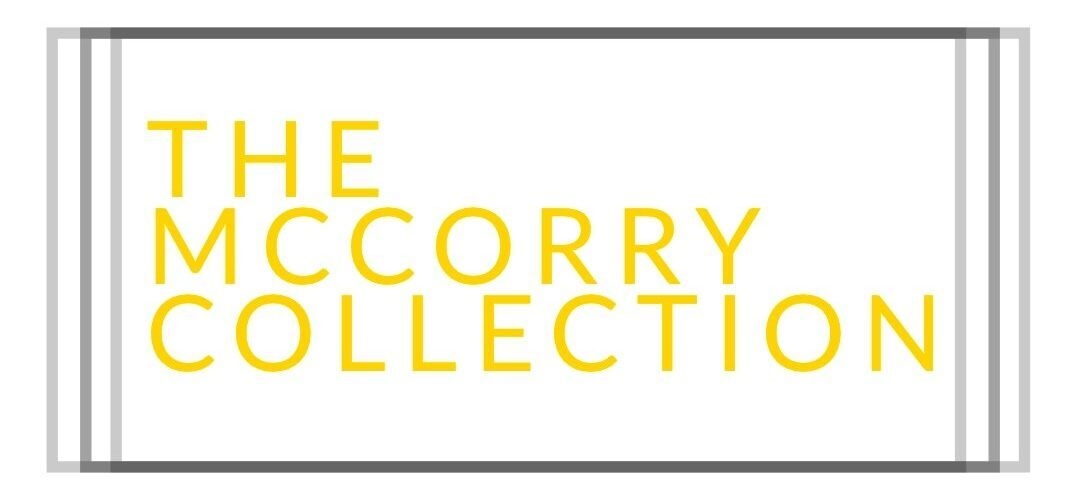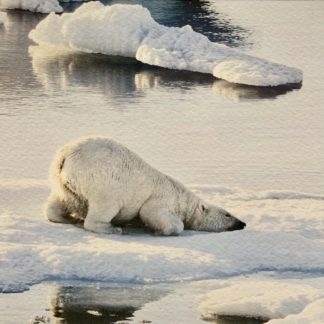Bio & Information
Sir Sidney Robert Nolan (Australian 1917-1992) Bio
Sidney Nolan was known for his Surreal and expressive paintings often focusing on Australian history depicting landscapes and legendary characters like outlaw Ned Kelly Sidney said “Painting is an extension of man’s means of communication as such it’s pure difficult and wonderful” Sidney was born in Carlton at that time an inner working-class suburb of Melbourne He was the eldest of four children His parents Sidney (a tram driver) and Dora were both fifth generation Australians of Irish descent Young Sidney later moved with his family to the bayside suburb of St Kilda He attended the Brighton Road State School and then Brighton Technical School and left school aged 14 Sidney enrolled at the Prahran Technical College (now part of Swinburne University) Department of Design and Crafts in a course which he had already begun part-time by correspondence From 1933 at the age of 16 he began almost six years of work for Fayrefield Hats Abbotsford producing advertising and display stands with spray paints and dyes From 1934 he attended night classes sporadically at the National Gallery of Victoria Art School Sidney was to go on to became one of Australia’s leading artists of the 20th century In the 1930’s he meet the founders of the Heide Museum of Modern Art John and Sunday Reed Sidney was a close friend of the arts patrons John and Sunday and is regarded as one of the leading figures of the so-called “Heide Circle” Heide was place for the discussion, creation and the promotion of modern art and literature by many including Sidney Nolan, Albert Tucker, Joy Hester, Arthur Boyd, John Perceval, Arthur Boyd and John Perceval were members of the Boyd artistic family who were cantered at “Open Country”, Murrumbeena Sidney painted many a canvas whilst at Heide and it was at Heide that the inaugural exhibition of Sidney Nolan’s Ned Kelly Paintings 1981 was held He joined the Angry Penguins in the 1940s becoming editor of the Angry Penguins magazine having painted the cover for the Ern Malley’s edition which was published in June 1944 The Ern Malley hoax poems were seen by Sidney and Sunday Reed as being uncannily prescient in touching on their own personal circumstances The Malley poems remained a real presence to him throughout his life He painted and drew literally hundreds of Malley-themed works and in 1975 said it inspired him to paint his first Ned Kelly series “It made me take the risk of putting against the Australian bush an utterly strange object Sidney lived for some time at the Reeds’ home, “Heide” outside Melbourne (now the Heide Museum of Modern Art) Here he painted the first of his famous iconic “Ned Kelly” series reportedly with input from Sunday Reed it was also with Sunday that Sidney had been having an open affair although he was married to John Reed’s sister Cynthia Sunday refused to leave her husband which Sidney had lived in a ménage à trois with the Reeds for several years the years there together have been seen as a dominating factor in the subsequent lives of them all In 1976 Cynthia Nolan died in a London hotel In 1978 Sidney married Mary née Boyd (1926-2016) youngest daughter within the Boyd family and previously married to John Perceval Sidney painted a wide range of personal interpretations of historical and legendary figures including explorers Burke and Wills and Eliza Fraser With time his paintings of Mrs Fraser came to be associated with his growing animus towards Sunday Reed However when first painted on Fraser Island in 1947 after he had left Heide he remained on friendly terms with the Reeds and sent them photos of the works for their approval he gave one Fraser Island painting to Sunday Reed as a Christmas gift that year Probably his most famous work is a series of stylised descriptions of the bushranger Ned Kelly in the Australian bush Sidney left the famous 1946–47 series of 27 Ned Kelly’s at “Heide” when he left it in emotionally charged circumstances Although he once wrote to Sunday Reed to tell her to take what she wanted he subsequently demanded all his works back Sunday Reed returned 284 other paintings and drawings to Sidney but she refused to give up the 25 remaining Kelly’s partly because she saw the works as fundamental to the proposed Heide Museum of Modern Art Possibly also because she collaborated with Sidney on the paintings Eventually she gave them to the National Gallery of Australia in 1977 and this resolved the dispute Sidney’s Ned Kelly series follow the main sequence of the Kelly story However Sidney did not intend the series to be an authentic depiction of these events Rather these episodes/series became the setting for the artist’s meditations upon universal themes of injustice love and betrayal The Kelly saga was also a way for Sidney to paint the Australian landscape in new ways with the story giving meaning to the place Although the Depression and World War II happened during this period Sidney decided to concentrate on something other than people struggling in life Sidney wanted to create and define episodes in Australian nationalism, to retell the story of a hero A hero which now has become a metaphor for humankind—the fighter the victim and the hero—resisting tyranny with a passion for freedom Sidney recognised that the conceptual image of the black square (Kelly’s helmet and armour) had been part of modern art since World War I Sidney just placed a pair of eyes into Kelly’s helmet which animates its formal shape As in most of the series Kelly’s steel head guard dominates the composition Sidney also concentrates on the Australian outback and shows a different landscape in nearly every painting Sidney’s paintings give the audience an insight into the history of Australia but also show others from the world how beautiful Australia is The intensity of the colours of the land and bush along with its overall smooth texture help create harmony between legend symbol and visual impact Kelly is in the centre of the painting but the colours around him help make him stand out It’s a very simplistic picture but highlights that Ned Kelly is an Australian icon In 1952 Sidney documented the effects of drought in outback Queensland His photographs of desiccated animals were a catalyst for his later drought paintings Sidney never relied upon one style or technique but rather experimented throughout his lifetime with many different methods of application and also devised some of his own Sidney was inspired by children’s art and modernist painting of the early 20th century During this time many younger artists were veering towards abstraction Sidney remained committed to the figurative potential of painting In terms of art history Sidney rediscovered the Australian landscape (Australia has not been an easy country to paint) His love of literature is seen as visually evident in his work Other key influences were the modernist artists such as Paul Cézanne, Pablo Picasso, Henri Matisse and Henri Rousseau Locally the arrival of the Russian artist Danila Vassilieff in Melbourne with his simple and direct art was significant for Sidney In his series Kelly is a metaphor for Sidney himself Sidney like the bushranger was a fugitive from the law In July 1944 facing the possibility that he would be sent to Papua New Guinea on front-line duty Nolan went absent without leave He adopted the alias Robin Murray a name suggested by Sunday Reed whose affectionate nickname for him was “Robin Redbreast” So when he created this series he viewed himself as the misunderstood hero/artist like the protagonist Kelly ” Sidney like this Kelly figure has also been a hero a victim a man who armoured himself against Australia and who faced it conquered it lost it…. ambiguity personified Sidney’s Ned Kelly series is one of the greatest sequences of Australian paintings of the 20th century His simplified depiction of Kelly in his armour has become an iconic Australian image In 1949 when the series was exhibited at the Musée National d’Art Moderne in Paris the museum’s director Jean Cassou called the works “a striking contribution to modern art” and that Sidney “creates in us a wonder of something new being born” Works from Sidney’s second Kelly series (mid-1950s) were acquired by major international galleries including the Museum of Modern Art in New York and the Tate Modern in London English critic Robert Melville wrote in 1963 that Sidney’s Kelly belonged to “the company of twentieth-century personages which includes Picasso’s minotaur, Chirico’s mannequins, Ernst’s birdmen, Bacon’s popes and Giacometti’s walking man” In 1951 Sidney moved to London England He travelled in Europe spending a year in 1956 painting themes based on Greek Mythology while in Greece In Paris he studied engraving and lithography with S. W. Hayter at Studio 17t two years there He became friends with the poet Robert Lowell and produced illustrations for some of his books Sidney was a prolific book cover illustrator his images enhancing the dust jackets of over 70 publications In 1965 Sidney completed a large mural (20 m by 3.6 m) depicting the 1854 Eureka Stockade rendered in enamelled jewellery on 1.5 tonnes of heavy gauge copper Sidney employed the “finger-and-thumb” drawing technique of Indigenous Australian sand painters to create the panoramic scene Commissioned by economist H. C. Coombs the mural is located at the entrance to the Reserve Bank of Australia’s Melbourne office on Collins Street During the period of 1968-1970 Sidney embarked on the creation of a monumental mural entitled Paradise Garden This project consisted of 1,320 floral designs split into three subsections that were created using crayon and dyes The intent of the subsections was to show the lifecycles of the plants starting with the primeval plants emerging from the mud transitioning to their full burst of colour in springtime and the completion of the life cycle with the withering plants returning to the earth In England Sidney attended the Aldeburgh Festival and become influenced by the organiser and composer Benjamin Britten exhibiting paintings at the festivals He continued to travel widely in Europe, Africa, China, Australia, and even Antarctica Sidney was knighted in 1981 and awarded the Order of Merit in 1983 Among Australian artists Sidney’s estate was identified as the third largest in Australia in 2013 following those of Brett Whiteley and Russell Drysdale Today Sidney’s works are in the collections of the National Gallery of Australia in Canberra the Tate Gallery in London The Museum of Modern Art in New York and the Hirshhorn Museum and Sculpture Garden in Washington D.C















